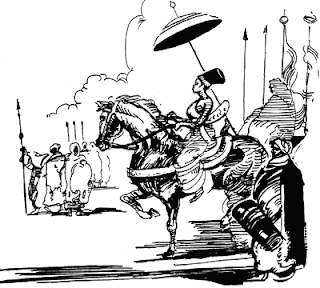Berbers, Jews, Europeans; connection?

My French-Morrocan friend Yoel Ohayon mentioned to me recently the origins of his surname. Ohayon is a combination of Berber and Hebrew language; Berber (O=son) + Hebrew (Hayon=life)hence son of Life (O-Hayon). The thought struck me that this is an interesting paralel to the Gaelic language. In Gaelic the prefix 'O' (as in O'brien, O'malley etc.) refers to a descendant of a particular person (though Mac or Mc literally means son of). This got me thinking; I recalled that there were North African Berber tribes who have a tradition that they originate from Northern Europe (while that may in fact be true it is geographically improbable that these Northern Europeans make up the bulk of the indigenous North African genepool).
The North Arican Jewish historian, Andre Chouraqui in his Between East and West: A History of the Jews of North Africa writes that the Berbers had a tradition that they originate from ancient Canaan/Israel. An interesting parallel is found in the Jerusalem Talmud: “Rabbi Shmuel bar Nachman said: three decrees were sent out into the land of Israel before they went into the land. Whoever wishes to leave - should leave. To make peace - should make peace. To make war - should do so. The Girgashi left and believed in the Holy One, Blessed be He, and went to Afriki … [1]
By the way, Chiriqui's other theory regarding the Berber origin of most of Morrocan Jewry [2] has been disproven by modern Genetic research which showed an almost 100 percent genetic affinity with Iraqi Jews.
Notes:
[1]. See Tractate Shevi’it 6:1
[2]. There are several recorded waves of conversion to Judaism among the native Berber tribes of the Maghreb, though its influence on the Jewish genepool appears to be negligble, possibly because many of them later converted to Islam with the Arab invasion, one example includes the 2 sons of the North African Jewish queen Qahina (pictured in drawing), of which I will write about more in a future post.

